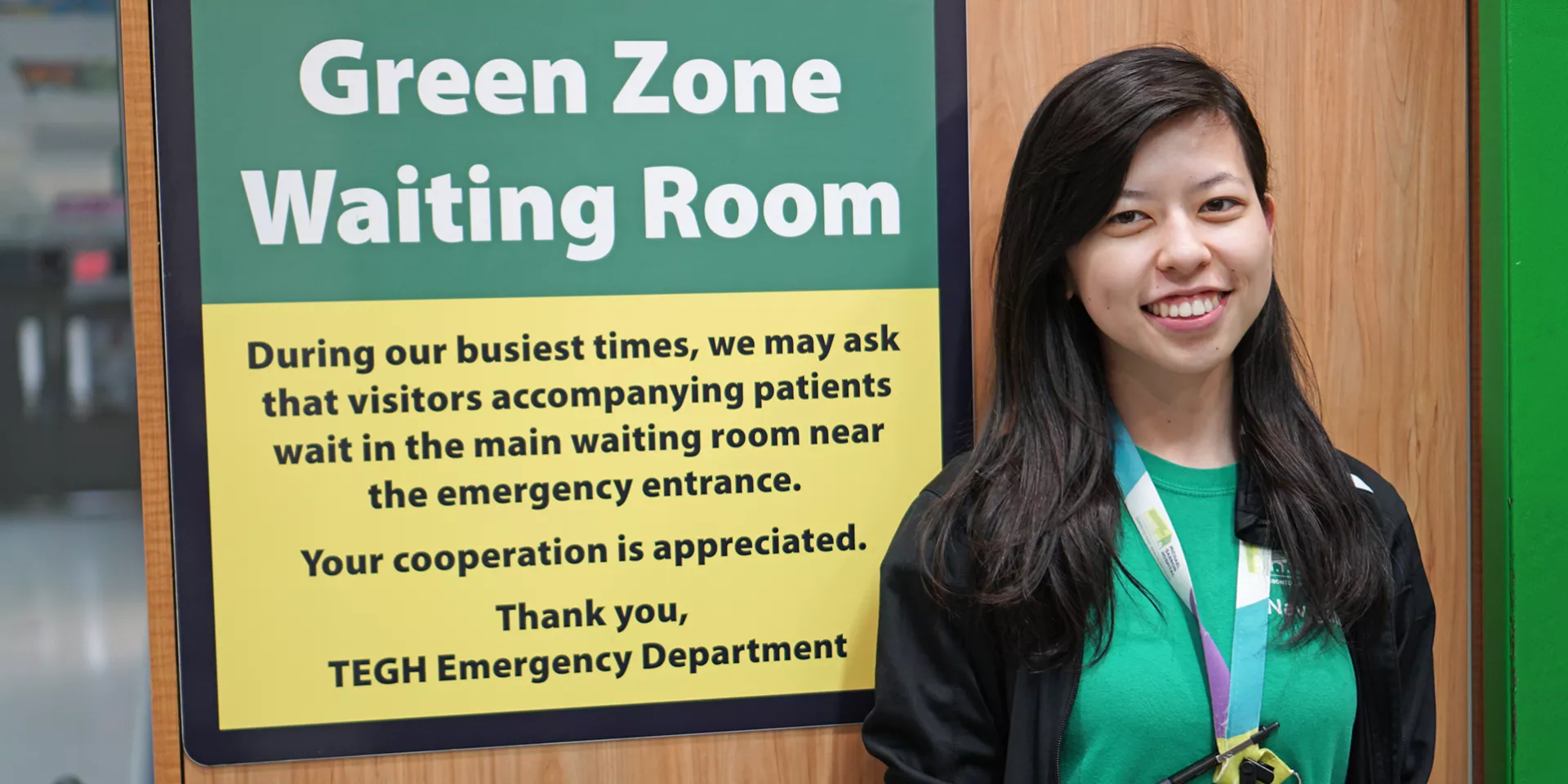An emergency hospital visit is usually associated with one thing: a long wait. But at Michael Garron Hospital, a new
initiative is making sure patients and their families get in and out as quickly as possible—and in comfort—by placing
navigators in the Stavro Emergency Department.
The Stavro Emergency Department is one of the busiest single-site locations in Ontario, with a new patient arriving every
six minutes. Each year, one in six East Toronto residents visits the emergency department to receive urgent care. Some of the newest members of the emergency department team have no health care background—by design.
“When we looked for patient navigators, we made a point of hiring people with customer service skills,” explains Dr. Kyle Vojdani, Interim Chief, Emergency Department and Medical Director, Emergency Services. “Our medical team is pre-occupied with providing quality patient care, while a non-clinician can just focus on a patient’s immediate, nonmedical needs.”
Navigators create a supportive environment to help make what is often a stressful experience more comfortable—while making sure patients are communicated with and can get in and out of the emergency department as quickly as possible. The program began a pilot project in 2017, and proved so valuable that it was made permanent last year. Navigators focus on patient flow: assigning and placing patients in rooms, ensuring tests are completed, following up on test results, flagging doctors when results are in, coordinating the paging of consults and meeting many other patient needs.
According to Dawn Lee, one of Michael Garron Hospital’s five emergency department navigators, chief among those needs is communication.
“Patients really appreciate knowing, for example, how long they can expect to wait, or that their test results are back from the lab,” she says. Equipped with her bright green “Ask Me” shirt and an approachable manner, she is a friendly and knowledgeable point person for patients.
“I love working with people and have found a special kind of teamwork here at the hospital,” says Dawn. “It’s so important
to know the broader team—housekeepers, residents, consult staff and others. Everyone plays a role and needs to be in the
loop to keep patients from falling through the cracks.”And they help make patients feel more cared for, too. “We also offer little things like a blanket to provide comfort and
make people feel tended to, and they are very grateful,” says Dawn.
Introducing patient navigators has brought a new level of communication to the emergency department. Patients,
staff and physicians are asked for feedback, which is then used to shape the role. And the dialogue goes both
ways: patient input recently inspired the department to create new and clearer discharge instructions to help patients
feel more confident when they return home.
“We’re very proud of this program,” says Dr. Vojdani. “Our staff and patients both love it. Navigators really help our
clinical staff focus on patient care.”
